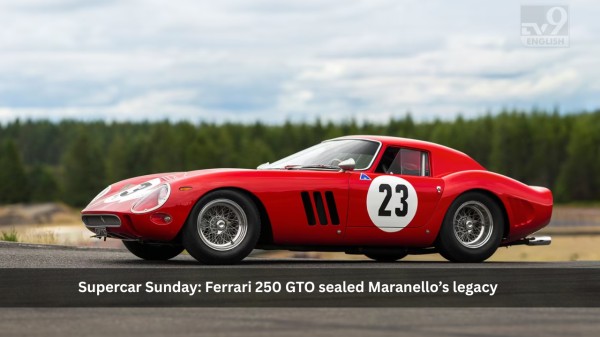

By signing in or creating an account, you agree with Associated Broadcasting Company's Terms & Conditions and Privacy Policy.


By signing in or creating an account, you agree with Associated Broadcasting Company's Terms & Conditions and Privacy Policy.

New Delhi: When starting Supercar Sunday, the aim was to bring out stories and anecdotes of cars that have really redefined the styling and performance by far means. Yes, it has to be one of those that hit the three-digit figure on the speedometer fast, but they need to inspire a shift. For this Sunday, though, I have chosen a car shape that was a poster for quite a few people growing up in the 2000s and 2010s, including the author of this piece.
In 2006, the Audi R8 made their debut as a mid-engine supercar coupe. Inspired by their performance in the endurance racing, especially the Le Mans-winning R8 LMP prototype, the production R8 was made to mix the track aspects of the engineering with the everyday usability aspect of the car. Under the Volkswagen group, the first generation or Type 42 was made alongside Lamborghini, and hence it shared elements with the Gallardo.

The second-generation model (Type 45) came in 2015, and along with the latest technology was offered in V10 and V10 Plus trims. After 18 years of being an entrant into the world of supercars, Audi pulled the plug on the R8 in 2024.
R8, in essence, was a 5.2-litre V10 engine, one of the last of its kind made. In the V10 RWD version, it made 562 bhp, while the R8 V10 Performance quattro made 612 bhp. It was mated with a seven-speed S tronic dual-clutch gearbox with a fast lightning-fast shifts.

The quattro all-wheel drive system came with amazing grip, while the RWD models were purely for performance and character. It could do 0-100 kph in 3.1 seconds and could reach a top speed of 330 kph. The Audi R8 was quite composed with magnetic ride adaptive suspension and very precise electromechanical steering, but that never hampered its performance on the road.
Built on the Audi’s ASF (Audi Space Frame), a lightweight aluminium monocoque chassis that was designed for good rigidity. The second-gen came with carbon-fibre reinforced plastics in the main areas like the rear bulkhead and tunnel, improving both stiffness and reduction of weight as well.

The Audi R8’s design came with a little aggressive stance. It came with a wide stance, low roofline and the signature sideblades. In the latest iteration, it had a single-frame honeycomb grille, quite sharp LED and large air intakes that underline their performance tent. In aerodynamic shape, it was pleasing to look at and without big wings or spoilers, it had the design for downforce and cooling.
On the inside, it had a very driver-focused design with premium leather, Alcantara and carbon fibre trim. It had the Audi Virtual Cockpit with a 12.3-inch digital instrument cluster. It came with ambient LED lighting and a better acoustic feeling in its last version.
The Audi R8 was more than just a cheap supercar, but rather the German engineering that brought with it the Le Mans factor. It was a car that could be used both on track and in the city, and that is what made the R8 so special. Put your foot down and it had the character of a sports car, but give it the calm pill and it felt no more than a normal hatchback.








